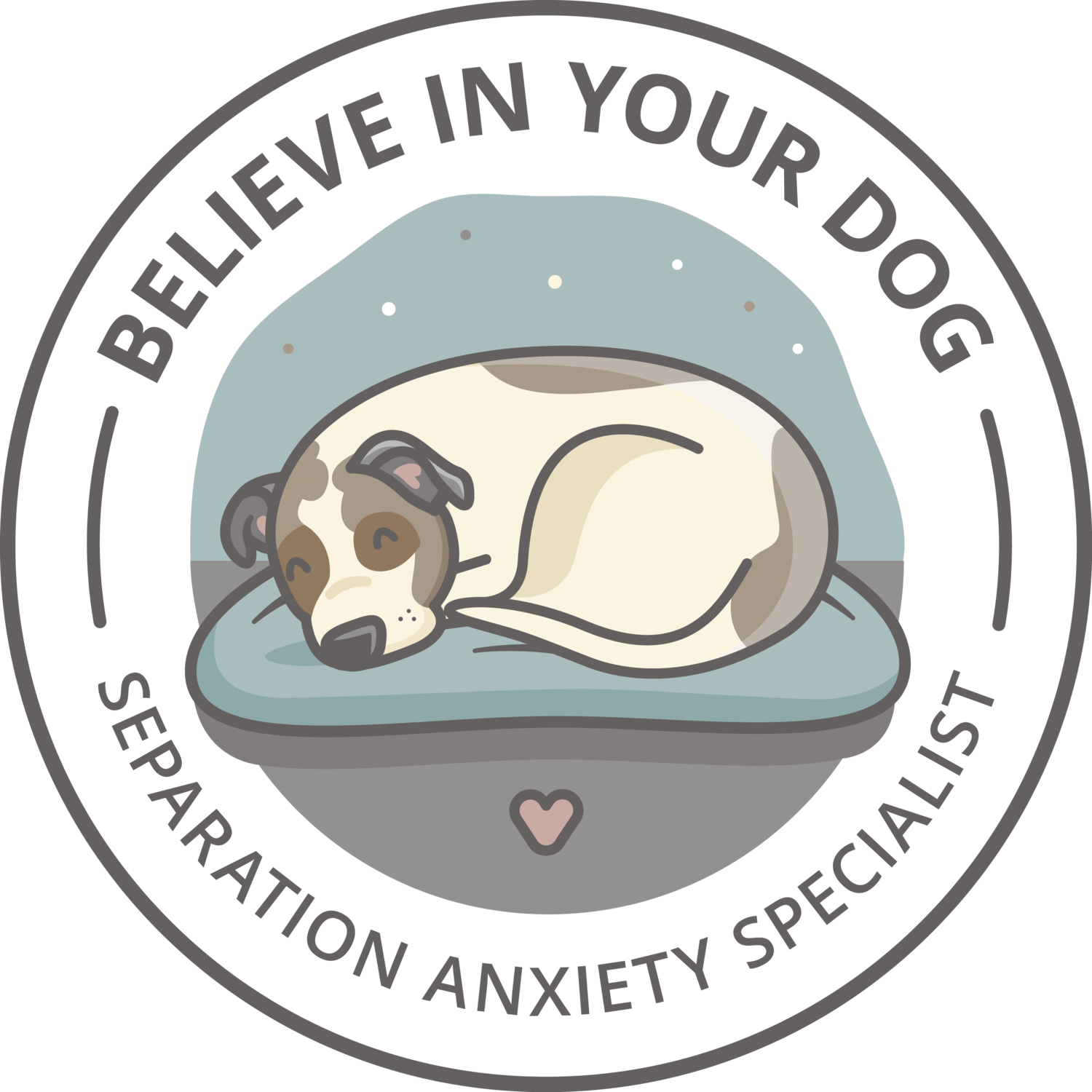The Secret Sauce to Separation Anxiety Success: Suspending Absences
In Dog Trainer Speak, the term management refers to an intervention that immediately stops the problem behavior from occurring. It’s the first order of business in any behavior modification plan. If a dog is raiding the trash can, we put a lock on it. If he is jumping all over visitors, we give him a stuffed kong before we open the door. These types of interventions prevent the rehearsal of the behaviors we are trying to decrease, so that the dog doesn’t become a professional trash can raider or visitor mugger, which would undermine our efforts.
We also manage to prevent the rehearsal of negative emotions like fear, panic and worry in dogs. Because they too become more deeply engrained the more the dog experiences them. If a dog is afraid of thunder, for example, we often see the fear intensify with each thunderstorm. Panic begets panic. And contrary to our human-centric popular belief, they don’t “just get used to it.”
Instead, they get worse with each exposure.
Management in separation anxiety training
Management in separation anxiety training is simple: we discontinue all absences unless we’re in a training session. That’s the secret sauce. When we do this, the dog learns that being left alone is safe because he’s only experiencing periods of isolation that he can handle comfortably. The panic ends. And when management is combined with an incremental plan that keeps the dog under threshold, new pathways are formed.
Management also puts an end to the behaviors that are associated with the panic. The dog no longer destroys doorways, howls all day long, or has accidents inside, because the negative emotion that was driving those behaviors is no longer present. This provides instant relief for the dog and the guardian.
How we manage
I know it might seem daunting to stop leaving your dog alone. It might even seem downright impossible. But the alternative – allowing your dog’s anxiety to get worse – is far more disheartening. With a little creativity and thinking outside the box, my clients are making it happen. They’re suspending absences, resolving separation anxiety, and getting back to loving life with their dogs.
My colleague, Julie Naismith, has created a network for guardians of separation anxiety dogs to find and exchange sitters. You can learn more about it here. There are also a plethora of alternatives in this blog post by Malena DeMartini.
I’ve summarized some of the options that my clients have found most useful in the infographic below.
It is finite
Remember, you won’t have to suspend absences forever. It is simply a management strategy that you will employ as you work through teaching your dog to be comfortable home alone. When you follow a systematic plan, this restriction can gradually be loosened. And don’t forget, you can use your training sessions to get some much-needed “you” time. When we work up to 10 minutes, you can safely take a walk around the neighborhood. And a quick trip to grab some coffee is in sight once we’ve built up 30 minutes.
Before you know it, you’ll be grocery shopping.
And your dog will be at home relaxing.
And it will all be so worth it.



